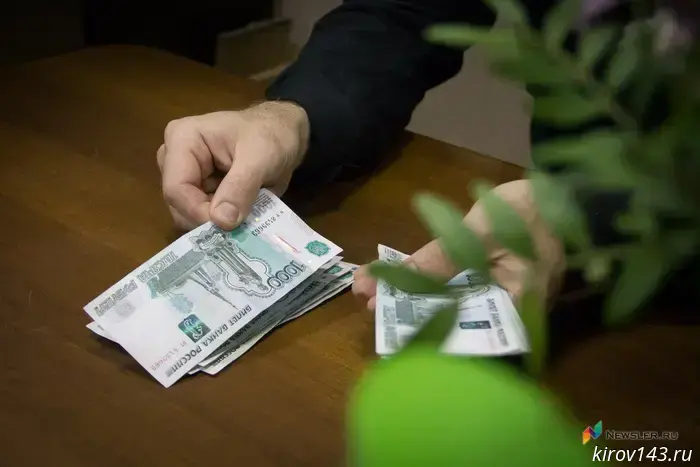
После смертельного дорожно-транспортного происшествия с автобусом стали очевидны проблемы в работе ГИБДД в Подосиновском районе.
3 августа 2025 года на трассе «Подосиновец – Пинюг» произошло дорожно-транспортное происшествие: легковой автомобиль «ВАЗ-2121» столкнулся с пассажирским автобусом «ПАЗ». Водитель легковушки получил судьбоносные травмы. Обнародованные фотоматериалы и информация о происшествии вызвали значительный общественный отклик.
Прокуратура Подосиновского района провела проверку и установила, что профилактическая работа сотрудников ГИБДД снизилась, что привело к увеличению числа ДТП с пострадавшими и погибшими. Также были выявлены недостатки в административной практике касательно водителей, уклоняющихся от уплаты штрафов.
В связи с этим прокурор направил представление начальнику ОМВД России «Лузский». Наблюдение за ситуацией на дорогах региона продолжается.


Другие Новости Кирова (НЗК)
 Опасение потерять автомобиль заставило жителя Кирова выплатить задолженность по алиментам.
Отец заплатил алименты, не желая расстаться с автомобилем и водительскими правами.
Футболист клуба «Фанком» не имел права выступать и в третьем дивизионе?
Скандальная история с Артемом Федчуком продолжила развиваться.
Опасение потерять автомобиль заставило жителя Кирова выплатить задолженность по алиментам.
Отец заплатил алименты, не желая расстаться с автомобилем и водительскими правами.
Футболист клуба «Фанком» не имел права выступать и в третьем дивизионе?
Скандальная история с Артемом Федчуком продолжила развиваться.
 In this week's podcast, I explored the neural mechanisms that make your phone so appealing. To summarize, there are clusters of neurons in your brain linked to your short-term motivation system, which identify various situations and essentially 'vote' for corresponding actions. For instance, if you feel hungry and spot a plate of cookies, a specific cluster of neurons will activate in response, pushing you towards the action of eating a cookie.
The strength of these votes hinges on an implicit assessment of expected rewards, shaped by your previous experiences. When faced with multiple possible actions, typically the one with the strongest support will prevail.
One explanation for why you find it hard to put down your phone is that it overwhelms this short-term motivation system. A contributing factor is the kind of rewards these devices generate. Popular platforms like TikTok use machine learning algorithms to tailor content based on user engagement, offering a consistently rewarding experience. Almost every time you interact with these apps, you're likely to be pleasantly surprised by the content and/or escape a state of boredom—both outcomes that our brains highly value.
As a result, the signals generated by the neuron clusters urging you to pick up your phone are particularly potent. Resisting these signals can be challenging and often requires activating other brain areas, such as the long-term motivation system, to remind yourself that engaging in a less thrilling activity now could lead to a more meaningful reward later. However, this is tiring and frequently ineffective.
Another challenge posed by our phones is their omnipresence. Most activities that yield strong rewards are relatively uncommon—it’s difficult to resist a warm cookie when you’re hungry, but such treats aren’t encountered frequently. In contrast, your phone is nearly always within reach. This constant availability means that your brain's inclination to pick it up is perpetually being triggered. You might sometimes resist this urge, but its relentless presence ensures that it will prevail in many situations throughout your day.
~~~
Understanding these neural mechanisms is crucial because they clarify why many attempts to reduce phone usage often fail—they simply don't go far enough!
For instance, consider several common strategies that frequently fall short…
Increase Friction
This might involve relocating your most enticing apps to an inconvenient folder or using a physical lock, like a Brick, that adds an extra step to access your phone. These methods often miss the mark because, from your short-term motivation system's perspective, this slight friction only marginally diminishes your expected reward, having little effect on the strength of its inclination to use your phone.
Make Your Phone Grayscale
Some propose that removing bright colors from your phone's screen will disrupt the cues that prompt you to pick it up. However, this tactic often fails, as colors have minimal impact on your brain's assessment of expected rewards, which hinges more on abstract advantages like enjoyable surprises and relief from boredom.
Moderate Your Use with Rules
It's also common to set strict limits on your app usage, such as “only 30 minutes of Instagram per day.” The issue is that these rules are abstract and symbolic, interacting only minimally with your short-term motivation systems, which focus more on immediate rewards in the physical world.
Detox Regularly
Another frequent approach is to "detox" by taking scheduled breaks from your phone, like a weekly Internet Shabbat or an annual phone-free meditation retreat. While these practices offer various benefits, they typically aren't sufficient to significantly reduce the learned rewards that drive your motivation system. It would take many months without your phone for your brain to start forgetting these rewards.
~~~
So, what strategies do work? Our new understanding of brain functioning suggests two straightforward strategies that are frustratingly basic yet difficult to maintain.
First, eliminate the reward signals by removing social media or any apps that monetize your attention from your phone. If your phone no longer provides consistently rewarding experiences, your brain will quickly lower the expected reward associated with picking it up.
Second, reduce your phone's availability by keeping it charging in the kitchen while at home. If you need to look something up or check messages, go to the kitchen. If you want to listen to a podcast while performing chores, use wireless earbuds or speakers. If your phone isn’t readily accessible, the corresponding neuronal clusters in your motivation system won’t activate as frequently or intensely.
Ultimately, it’s clear: our brains are not well-equipped for smartphones. We may not appreciate this fact, but we cannot overlook it. Addressing the resulting problems requires more than minor adjustments. We must significantly alter our relationship with our devices if we wish to manage their influence effectively.
Водителей информируют о закрытии переезда из-за проведения ремонтных работ.
In this week's podcast, I explored the neural mechanisms that make your phone so appealing. To summarize, there are clusters of neurons in your brain linked to your short-term motivation system, which identify various situations and essentially 'vote' for corresponding actions. For instance, if you feel hungry and spot a plate of cookies, a specific cluster of neurons will activate in response, pushing you towards the action of eating a cookie.
The strength of these votes hinges on an implicit assessment of expected rewards, shaped by your previous experiences. When faced with multiple possible actions, typically the one with the strongest support will prevail.
One explanation for why you find it hard to put down your phone is that it overwhelms this short-term motivation system. A contributing factor is the kind of rewards these devices generate. Popular platforms like TikTok use machine learning algorithms to tailor content based on user engagement, offering a consistently rewarding experience. Almost every time you interact with these apps, you're likely to be pleasantly surprised by the content and/or escape a state of boredom—both outcomes that our brains highly value.
As a result, the signals generated by the neuron clusters urging you to pick up your phone are particularly potent. Resisting these signals can be challenging and often requires activating other brain areas, such as the long-term motivation system, to remind yourself that engaging in a less thrilling activity now could lead to a more meaningful reward later. However, this is tiring and frequently ineffective.
Another challenge posed by our phones is their omnipresence. Most activities that yield strong rewards are relatively uncommon—it’s difficult to resist a warm cookie when you’re hungry, but such treats aren’t encountered frequently. In contrast, your phone is nearly always within reach. This constant availability means that your brain's inclination to pick it up is perpetually being triggered. You might sometimes resist this urge, but its relentless presence ensures that it will prevail in many situations throughout your day.
~~~
Understanding these neural mechanisms is crucial because they clarify why many attempts to reduce phone usage often fail—they simply don't go far enough!
For instance, consider several common strategies that frequently fall short…
Increase Friction
This might involve relocating your most enticing apps to an inconvenient folder or using a physical lock, like a Brick, that adds an extra step to access your phone. These methods often miss the mark because, from your short-term motivation system's perspective, this slight friction only marginally diminishes your expected reward, having little effect on the strength of its inclination to use your phone.
Make Your Phone Grayscale
Some propose that removing bright colors from your phone's screen will disrupt the cues that prompt you to pick it up. However, this tactic often fails, as colors have minimal impact on your brain's assessment of expected rewards, which hinges more on abstract advantages like enjoyable surprises and relief from boredom.
Moderate Your Use with Rules
It's also common to set strict limits on your app usage, such as “only 30 minutes of Instagram per day.” The issue is that these rules are abstract and symbolic, interacting only minimally with your short-term motivation systems, which focus more on immediate rewards in the physical world.
Detox Regularly
Another frequent approach is to "detox" by taking scheduled breaks from your phone, like a weekly Internet Shabbat or an annual phone-free meditation retreat. While these practices offer various benefits, they typically aren't sufficient to significantly reduce the learned rewards that drive your motivation system. It would take many months without your phone for your brain to start forgetting these rewards.
~~~
So, what strategies do work? Our new understanding of brain functioning suggests two straightforward strategies that are frustratingly basic yet difficult to maintain.
First, eliminate the reward signals by removing social media or any apps that monetize your attention from your phone. If your phone no longer provides consistently rewarding experiences, your brain will quickly lower the expected reward associated with picking it up.
Second, reduce your phone's availability by keeping it charging in the kitchen while at home. If you need to look something up or check messages, go to the kitchen. If you want to listen to a podcast while performing chores, use wireless earbuds or speakers. If your phone isn’t readily accessible, the corresponding neuronal clusters in your motivation system won’t activate as frequently or intensely.
Ultimately, it’s clear: our brains are not well-equipped for smartphones. We may not appreciate this fact, but we cannot overlook it. Addressing the resulting problems requires more than minor adjustments. We must significantly alter our relationship with our devices if we wish to manage their influence effectively.
Водителей информируют о закрытии переезда из-за проведения ремонтных работ.
 В Кировской области выпал первый снежный покров.
Жители области выложили снимки первого снега.
В Кировской области выпал первый снежный покров.
Жители области выложили снимки первого снега.
 За прошедшую неделю в Кировской области случилось 47 пожаров.
В МЧС обобщили результаты деятельности за период с 6 по 12 октября.
За прошедшую неделю в Кировской области случилось 47 пожаров.
В МЧС обобщили результаты деятельности за период с 6 по 12 октября.
 В районе Кильмезя задержали браконьера, который вёз в автомобиле тушу лося и ружьё.
В Кильмезском районе работники охотнадзора и полиции остановили нелегальную охоту на лося.
В районе Кильмезя задержали браконьера, который вёз в автомобиле тушу лося и ружьё.
В Кильмезском районе работники охотнадзора и полиции остановили нелегальную охоту на лося.
После смертельного дорожно-транспортного происшествия с автобусом стали очевидны проблемы в работе ГИБДД в Подосиновском районе.
После инцидента с участием «ВАЗ-2121» и пассажирского автобуса прокуратура Подосиновского района выявила ухудшение эффективности действий дорожной полиции.
